I discovered Guru Dutt rather late in life. As a teenager, I always found him too intense. Someone who reminded me of dark, forbidden corners within. Of spiralling gloom you could lose yourself in, just the way he had. Even though he had made sunlit films like Baazi, Jaal, Aar Paar, Mr and Mrs 55; his Pyaasa to some extent and Kaagaz Ke Phool seemed to celebrate defeatism. But then a few years ago, while researching him for a radio show, I saw him as he could have been.
The questions erupted in my head. Is creativity a gift hard won at the cost of happiness, peace, simple joys? Is a creative perfectionist doomed to unfulfilled relationships, excessive expectations, hyper sensitivity? Would Guru Dutt have been still alive if he was less gifted, less sensitive, more thick-skinned? Ironically, the man who knew that success was just a bunch of paper flowers and turned his back at the circus of fame with a defiant, Yeh Duniya Agar Mil Bhi Jaaye Toh Kya Hai could not apparently bear the absence of validation, personal and professional.
Maybe he anticipated his end in the climax of Kaagaz Ke Phool where he sits alone in a destroyed studio with a lone beam of sunlight and the memory of the woman who could have saved him. And because the film cut too close to the bone, the audience rejected it because it came without Pyaasa’s brand of poetic heroism where a man chooses to walk away from a world that could have been his. Kaagaz Ke Phool was a systematic, almost perverse destruction of an edifice, a life, a man who should not have been the wreck he turned out to be. His marriage was a failure, his daughter was a shrill, interfering nuisance, and the love of his life destined to be taken away from him by malevolent forces inbuilt in success and failure. Was it portentous, autobiographical? Maybe. Maybe not. But something grew bigger than his capacity to handle it.
Yet, when I recently saw him in Abrar Alvi’s Saheb Bibi Aur Ghulam, I was struck by just how pure and tranquil he was as Bhootnath in the first half of the film. This was one of his last creative endeavours and he still showed us glimpses of an untarnished soul, a boy child, taking in the tragedies, the romance, the violence, the celebrations with wide eyes and an open soul. Remember how he watches the sensuous splendour of Saaqiya Aaj Mujhe Neend Nahin Aayegi? How from a state of open-mouthed, tongue-tied adoration, he grows into a protective well-wisher of Meena Kumari’s Choti Bahu? How from stuttering with helpless rage at the way Jaba (Waheeda Rehman) bullies him, he grows into a man who can stand up to her and for her?You could not see any cracks, just dignity even when he falls on his knees in the heart-breaking climactic moment when he sees a skeleton in the ruins of a haveli and lets out a muffled cry of, “Choti Bahu!”
As a director too, he was undoubtedly a master of light and shadows, shot- taking that blurred the line between an impressionist canvas and cinema, emotional content and crisp technique. To him is credited Hindi cinema’s first cinemascope film, yes, Kaagaz Ke Phool. He also had a great sense of music and movement because he was a trained dancer. And because he was an actor, he understood other actors too, tapping their core to get them to perform naturally, fluently. Nothing can quite sum up the power of the close-up in a Guru Dutt film. He understood when to tell the story from afar and when to move closer to capture a glint of light in the eye, a glistening tear drop and a frown. He had an eye for talent and his creative collaborations with Dev Anand, Waheeda Rehman, cinematographer VK Murthy, Raj Khosla, Geeta Gutt, Abrar Alvi, SD Burman and Sahir were magical.
The 50s were fecund with great cinema and in post independence India, there was a collective flexing of creative muscle with a certain Satyajit Ray drenching, crushing poverty with almost unbearable beauty, Bimal Roy and Raj Kapoor addressing social issues in signature narratives that never grew ponderous. There were Mehboob Khan’s spectacular melodramas and amid big giants and subtle artists, there was Guru Dutt, quietly crafting his films.
Today Kaagaz Ke Phool is considered to be one of the finest films ever made, having won a mention even in Time but when it first came out, it was rejected outright because in an age of politely detached cinema, it was too dark, too personal, too self-indulgent. Film lore has it that at Regal cinema, disgruntled people even indulged in stone throwing. Was it this rejection coupled with his unsorted personal issues that wrecked him? We will never know now. There was so much unexpressed within him and something else too that could not be endured, surmounted, beaten. What was it that drove him to suicide thrice? On October 10, 1964, he was found dead, having overdosed on sleeping pills.
While shooting Chaudavin Ka Chaand, he had told VK Murthy, how he had achieved everything he ever wanted and yet, he felt empty..as if he had nothing. There was a sense of loss that perhaps these lines by poet and lyricist Kaifi Azmi summed up..‘Dekhi zamane ki yaari..bichde sabhi baari baari…kya leke mile ab duniya se..ansoo ke siva kuch paas nahi..ya phool hi phool the daman mein ya kanton kii bhi aas nahin…’
But even in his short life, Guru Dutt imprinted the history of cinema. If only, he had lived long enough to hear the lasting resonance of his work in minds and hearts across the world. And valued his life more.
Reema Moudgil is the author of Perfect Eight (http://www.flipkart.com/b/books/perfect-eight-reema-moudgil-book-9380032870?affid=unboxedwri )






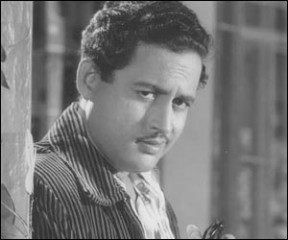
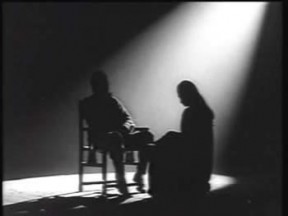
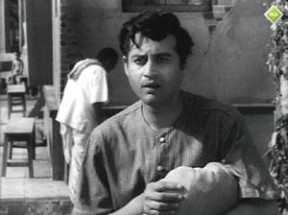
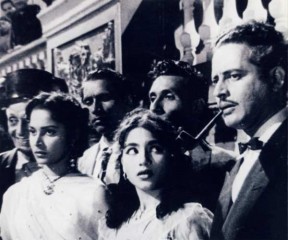
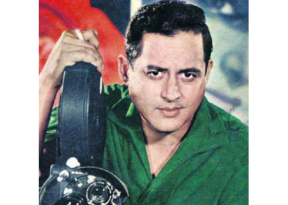
this is so COMPLETE
so COMPASSIONATE
his thoughtful n talented mind led him to make Kaagaz Ke Phool n Pyasaa n the same thoughtful n talented mind led him to commit suicide.
Well i’d repeat a line i’ve heard
“Jo Saaz Se Niklee Hai Wo Sab Ne Suni Hai, Jo Saaz Pe Guzri Hai Wo Kis Dil Ko Khabar Hai” Everyone knows what’s comming out of him but no one understands what’s going on within him.What bothered him..
This is beautifully written. Want to once again watch his movies…
Guru Dutt has always been my favourit as an acotr and director..You are so right about his character development in saahib, biwi aur ghlam..i can just watch that movie numerous times for him only..Kaagaz ke phool looks dark, gloomy but shows hoe man remain empty-handed even after gaining a lot..what does a man want, name , fame , love or peace? there is no certain answer to it..everyone has his own aspect..and I understand that this goes the same for him too..what he really wanted and what he got remain unanswered..he was definitely remained a mystery for many..